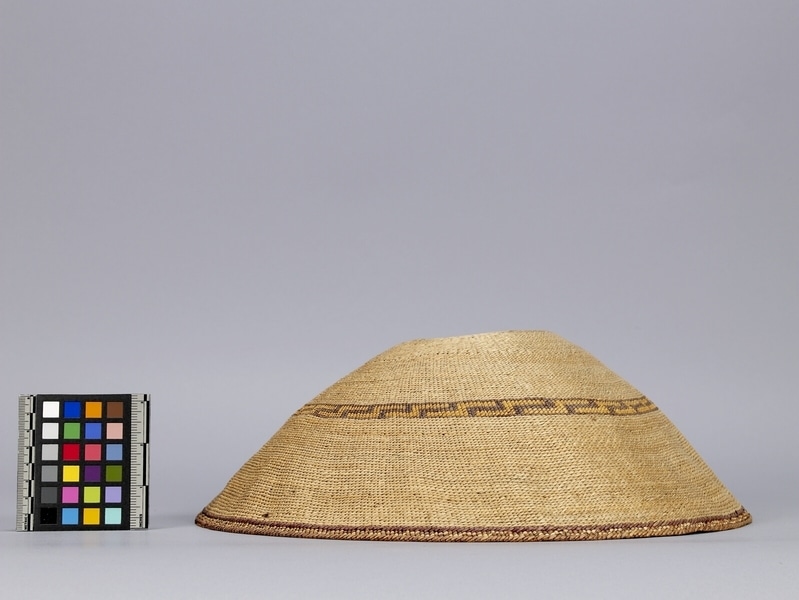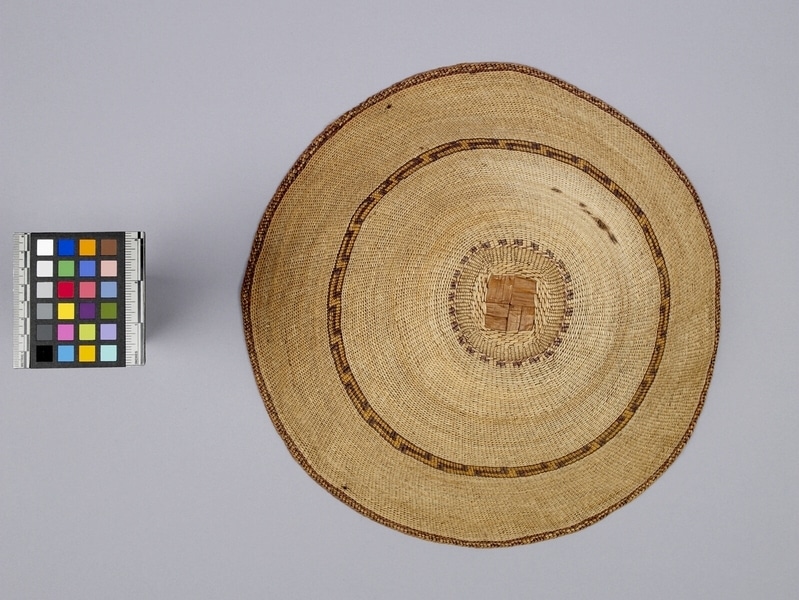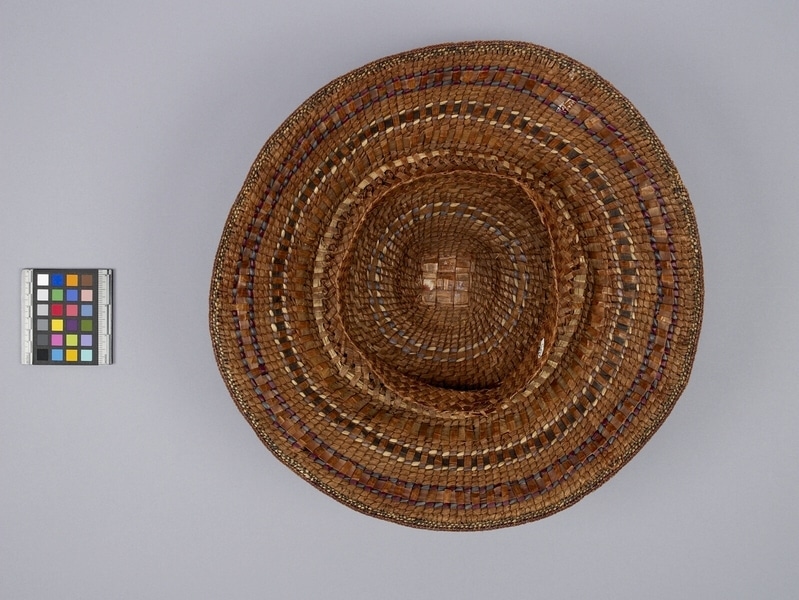Hat Item Number: A1479 from the MOA: University of British Columbia



Description
Double woven hat with spruce root wefts on outside and red cedar bark wefts inside. The hat has a domed appearance with indented top. The warps are red cedar bark, and are plaited at the top. The warps are split and twined with spruce root. Double strand twining is used to cover first three and then two warps at a time for several rows, and then one at a time. Some of the warps near the top rim have been dyed. A large area of natural coloured spruce root wefts follows, with triple strand twining preceding a decorative band. This horizontal band of zigzag design is done in yellow and faded purple. Near the bottom rim there is a row of triple strand twining that is dyed purple. It is followed by two rows of double strand twining which alternate purple and the natural yellow. The bottom of the hat is finished with a row of triple strand twining with purple dyed wefts. The hat liner is woven with red cedar bark wefts, except for a few areas where grass is used. The top is also plaited and then the warps are split and twined. There is a decorative row that alternates light yellow and purple dyed grass. Several rows of double and triple strand twining in red cedar follow. A hat band of diagonally plaited red cedar bark is then introduced. It has a strip of grass plaited into it near the point of attachment. Decorative bands in purple/yellow and purple/turquoise follow. The warps are split in two again near the rim.
Cultural Context
clothing; trade; basketry
Narrative
Mrs. H. R. Spencer traded for this hat, and also several baskets, with First Nations women who came to her home. Used clothing and money were exchanged for baskets and wild berries, such as cherries. This hat has a few burn marks on the outside, perhaps from standing to close to a fire.
Specific Techniques
This hat is predominantly woven using double or triple strand twining. In double strand twining two wefts are used to wrap the warp(s) by passing one over and the other under the warp(s) in a regular manner. In triple strand twining the weaver has three wefts, each separated by a warp from the one that precedes or follows it. The one furthest to the left passes over two warps and then under one, the pattern repeats. It is also double woven. This means that two separate hats were woven and then joined together at the rim.
Item History
- Made in Vancouver Island, British Columbia, Canada during 1890
- Collected in Vancouver, British Columbia, Canada during 1894
- Owned by Mrs. W. R. Spencer
- Owned by Virginia B. Draper before March 1952
- Received from Virginia B. Draper (Donor) during March 1952
What
- Name
- Hat
- Identification Number
- A1479
- Type of Item
- hat
- Material
- spruce root, cedar bark ? and dye
- Manufacturing Technique
- twined, woven, dyed, plaited and split
- Overall
- width 14.4 cm, diameter 36.9 cm
Who
- Culture
- Nuu-chah-nulth ?
- Previous Owner
- Mrs. W. R. Spencer and Virginia B. Draper
- Received from
- Virginia B. Draper (Donor)
Where
- Holding Institution
- MOA: University of British Columbia
- Made in
- Vancouver Island, British Columbia, Canada
- Collected in
- Vancouver, British Columbia, Canada
When
- Creation Date
- during 1890
- Collection Date
- during 1894
- Ownership Date
- before March 1952
- Acquisition Date
- during March 1952
Other
- Item Classes
- basketry
- Condition
- fair
- Current Location
- Case 10
- Accession Number
- 2095/0001